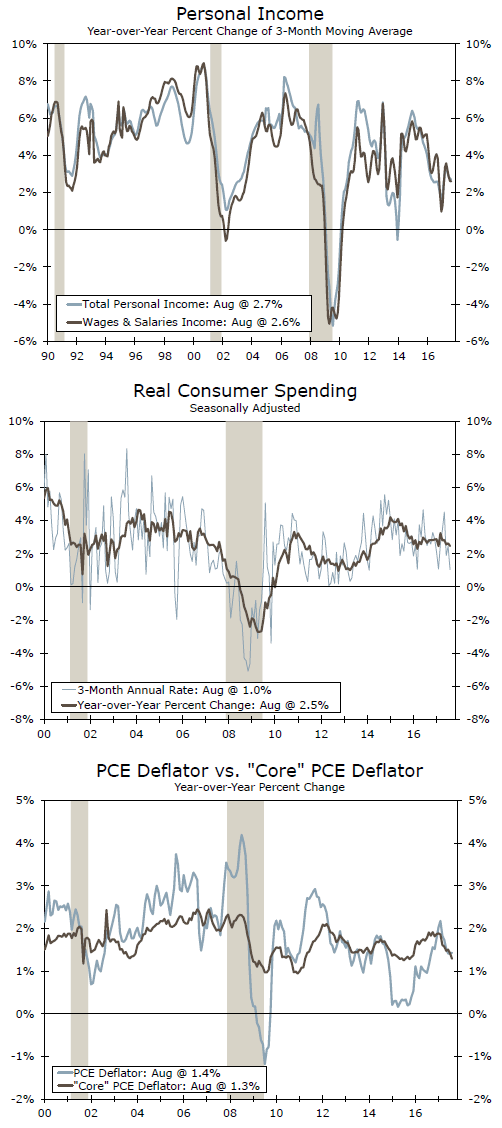After a relatively strong start to the third quarter, personal income and spending weakened in August, increasing 0.2 percent and 0.1 percent, respectively. In real terms, spending declined 0.1 percent.
Weaker Income and Consumption
Personal income increased only 0.2 percent in nominal terms while disposable personal income increased 0.1 percent in August. However, real disposable personal income declined 0.1 percent due to higher inflation during the month. Income was particularly weak in August, only increasing $28.6 billion compared to $56.1 billion in July. Compensation of employees increased only $6.2 billion during the month compared to $47.9 billion in July. Particularly, wages and salaries increased only $3.3 billion. Of this, private industry wages and salaries were up $1.3 billion while government wages and salaries increased $2.0 billion. Compare this with an increase of $40.0 billion for private wages and salaries in July and a similar increase of $2.0 billion for government wages and salaries in July.
Personal current transfers increased by $9.6 billion during the month compared to only $5.6 billion in July. The biggest difference within personal current transfers was an increase of $5.2 billion in "other" transfers compared to a decline of $1.1 billion in July. This is, perhaps, a consequence of some of the early effects of the hurricanes affecting Florida and Texas.
Meanwhile, August personal consumption expenditures increased only 0.1 percent in nominal terms after increasing 0.3 percent in July while real personal consumption expenditures also declined 0.1 percent after inching higher, by 0.2 percent, in July. The biggest difference compared to July was a $16.3 billion decline in durable goods consumption, which almost erased the $16.5 billion increase in durable goods consumption in July. On the other hand, services consumption was robust in August, increasing $26.7 billion in August after a $20.7 billion increase the previous month.
GDP Growth Will Probably Downshift in Q3
With the release of personal income and spending for August it is clear that both of these numbers will not contribute to a repeat of the strong performance we saw in GDP during the second quarter of the year. Although we may see a rebound in September, it is probably not going to be enough to override the weakness we saw in August.
Furthermore, although price pressures remained contained during the month, with the PCE price index increasing 0.2 percent in the month while the core PCE inched up only 0.1 percent, the weak performance of both nominal income and consumption growth numbers pushed the real numbers into negative territory, which will put downward pressure on real overall numbers for GDP in Q3.
Thus, even with an expected rebound in the September real consumer spending numbers, we see downside risk to our call for real consumer spending in Q3.













